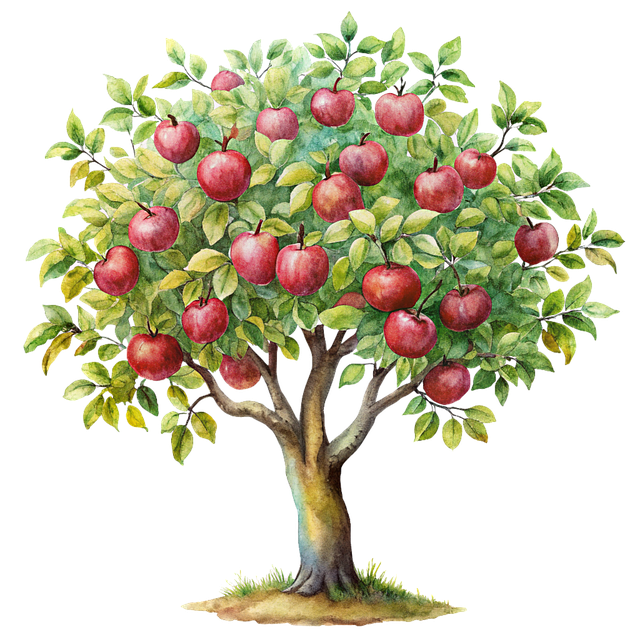The Little Red Apple Tree
by James Whitcomb Riley
The Little-red-apple Tree!—
O the Little-red-apple Tree!
When I was the littlest bit of a boy
And you were a boy with me!
The bluebird's flight from the topmost boughs,
And the boys up there—so high
That we rocked over the roof of the house
And whooped as the winds went by!
Hey! The Little-red-apple Tree!
With the garden-beds below,
And the old grape-arbor so welcomely
Hiding the rake and hoe!
Hiding, too, as the sun dripped through
In spatters of wasted gold,
Frank and Amy away from you
And me in the days of old!
The Little-red-apple Tree!—
In the edge of the garden-spot,
Where the apples fell so lavishly
Into the neighbor's lot;—
So do I think of you always
Brother of mine, as the tree,—
Giving the ripest wealth of your love
To the world as well as me.
Ho! The Little-red-apple Tree!
Sweet as its juiciest fruit
Spanged on the palate spicily,
And rolled o'er the tongue to boot,
Is the memory still and the joy
Of the Little-red-apple Tree,
When I was the littlest bit of a boy
And you were a boy with me!
"The Little Red Apple Tree" by James Whitcomb Riley is a simple yet profound poem that captures the essence of childhood innocence and the journey of growth and maturity. Through the symbol of an apple tree, Riley conveys themes of nurturing, growth, and the inevitable passage of time.
The poem begins with the image of a young apple tree, a symbol that holds profound significance throughout the narrative. Initially, the tree stands small and unassuming, representing the innocence and potential of youth, akin to a child embarking on their journey of exploration. The red apples it bears are not mere fruits but symbolic of the tree's dreams and aspirations. These vibrant and enticing apples, drawing the attention of all, including the nearby children, serve as a metaphor for the allure of youthful dreams.
As the seasons change, the tree embarks on a journey of natural cycles, a journey that is both challenging and beautiful. It faces the trials of weather and time, yet with each passing year, it grows more robust and beautiful. This journey mirrors the path of a child growing into adulthood, facing challenges and overcoming them, growing both in physical stature and in character.
Riley masterfully employs the changing seasons as a metaphor for the stages of life. Just as the tree blossoms in spring and bears fruit in summer, a person undergoes growth and development, reaching their full potential in the prime of life. The harvest season, a symbolic representation of the period when one reaps the rewards of their hard work and enjoys the fruits of their labor, further underscores this thematic structure.
Towards the end of the poem, there is a reflective tone as the narrator looks back at the tree, now mature and sturdy. This reflection is not just a reminder of the swift passage of time and the changes that come with it but a profound contemplation on the enduring trials of life and the strength that emerges from them. The mature tree stands as a testament to this, much like a person moving through the journey of life, facing trials but continually growing.
Many of us deeply identify with the enduring trials of life that the poem 'The Little Red Apple Tree' by James Whitcomb Riley beautifully captures. However, there may come a point when we no longer feel like we're growing stronger, and the poem also reflects this sentiment.







